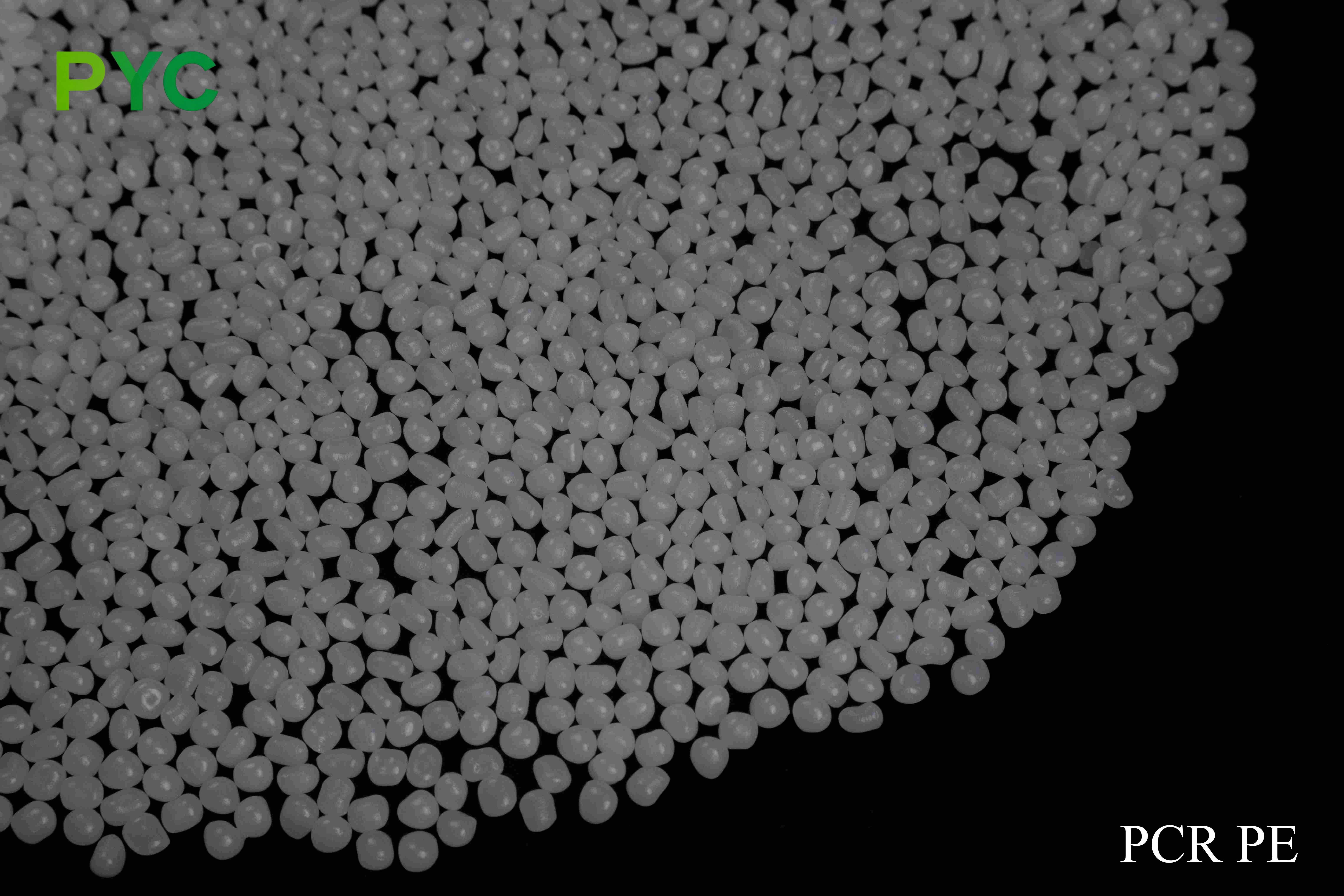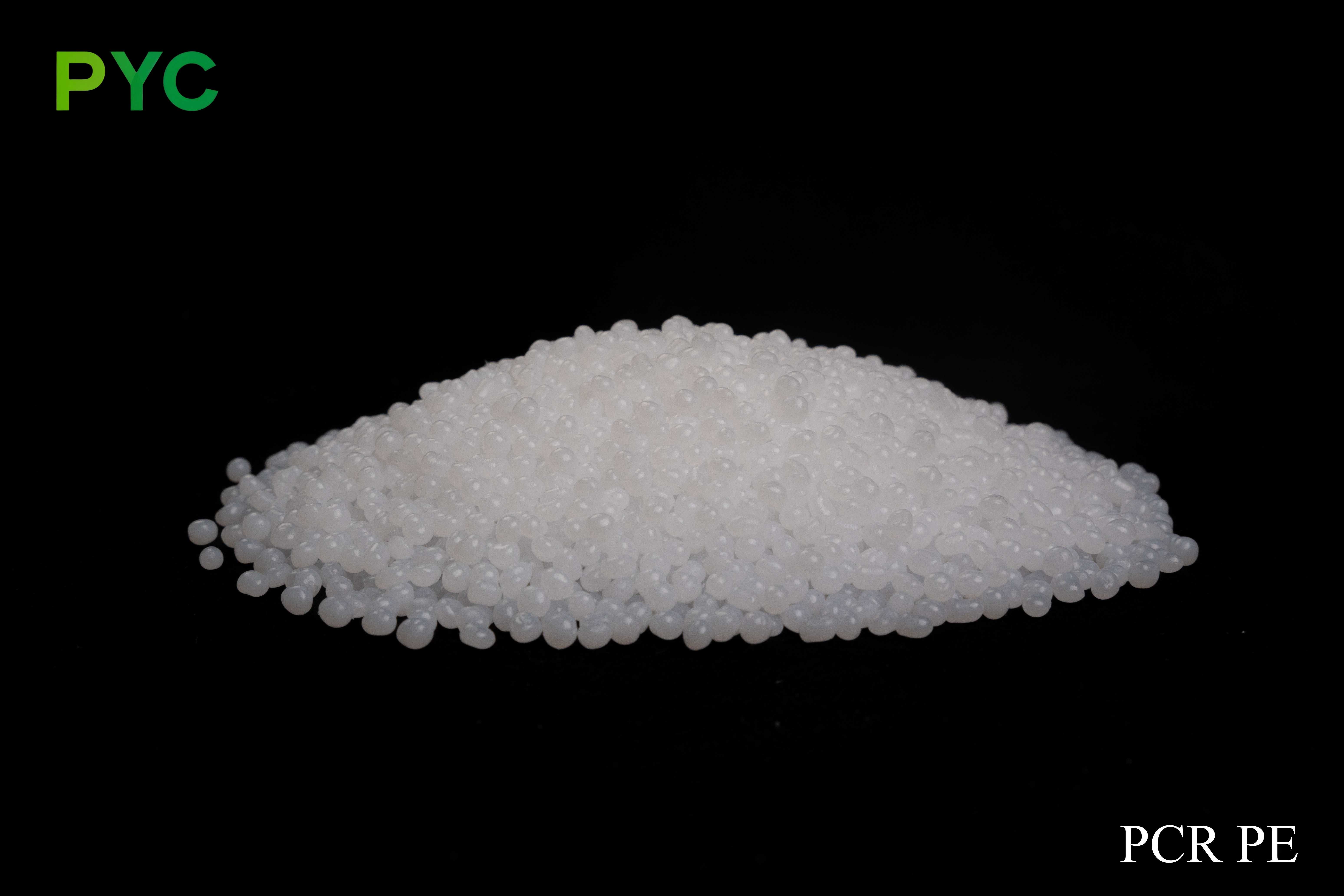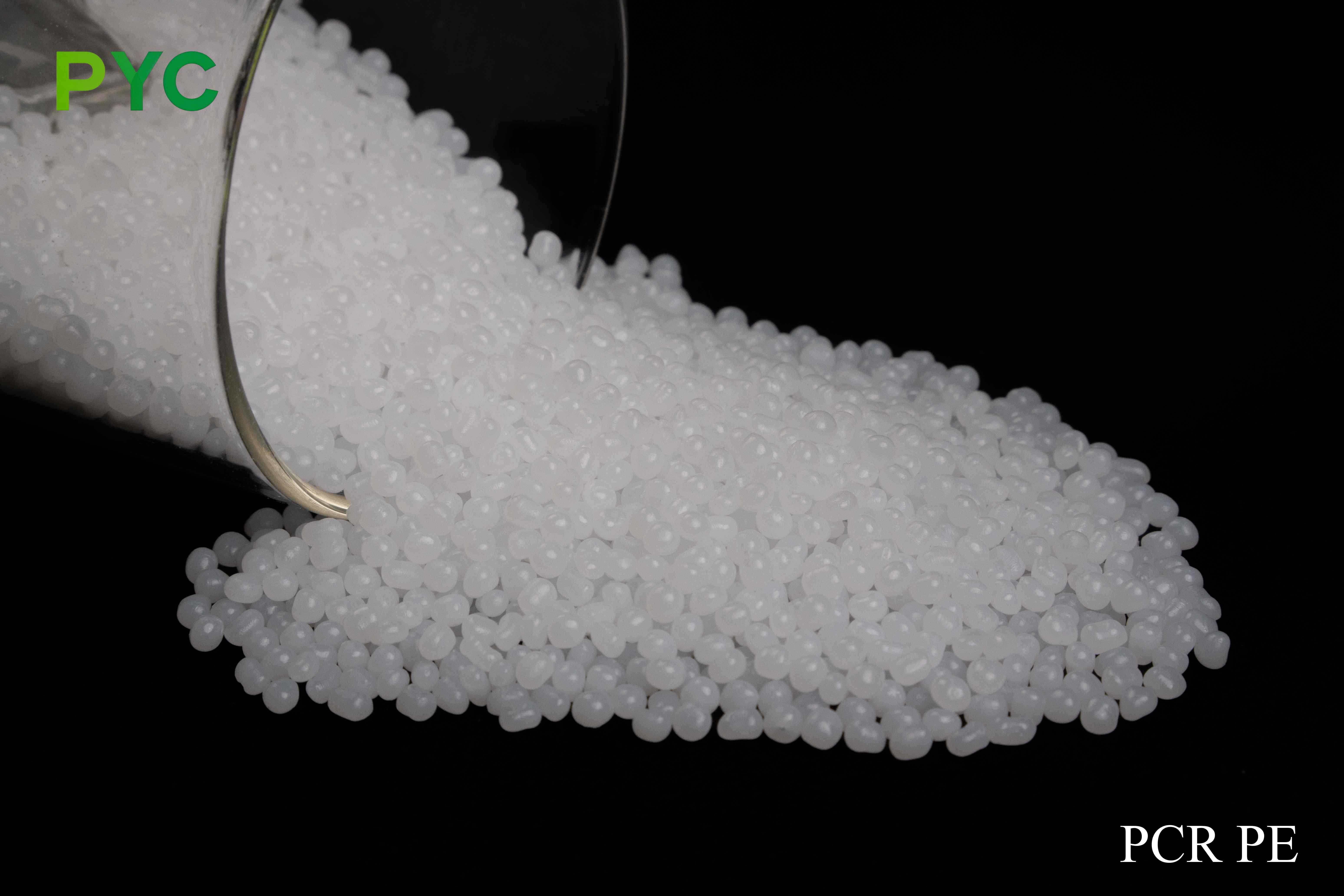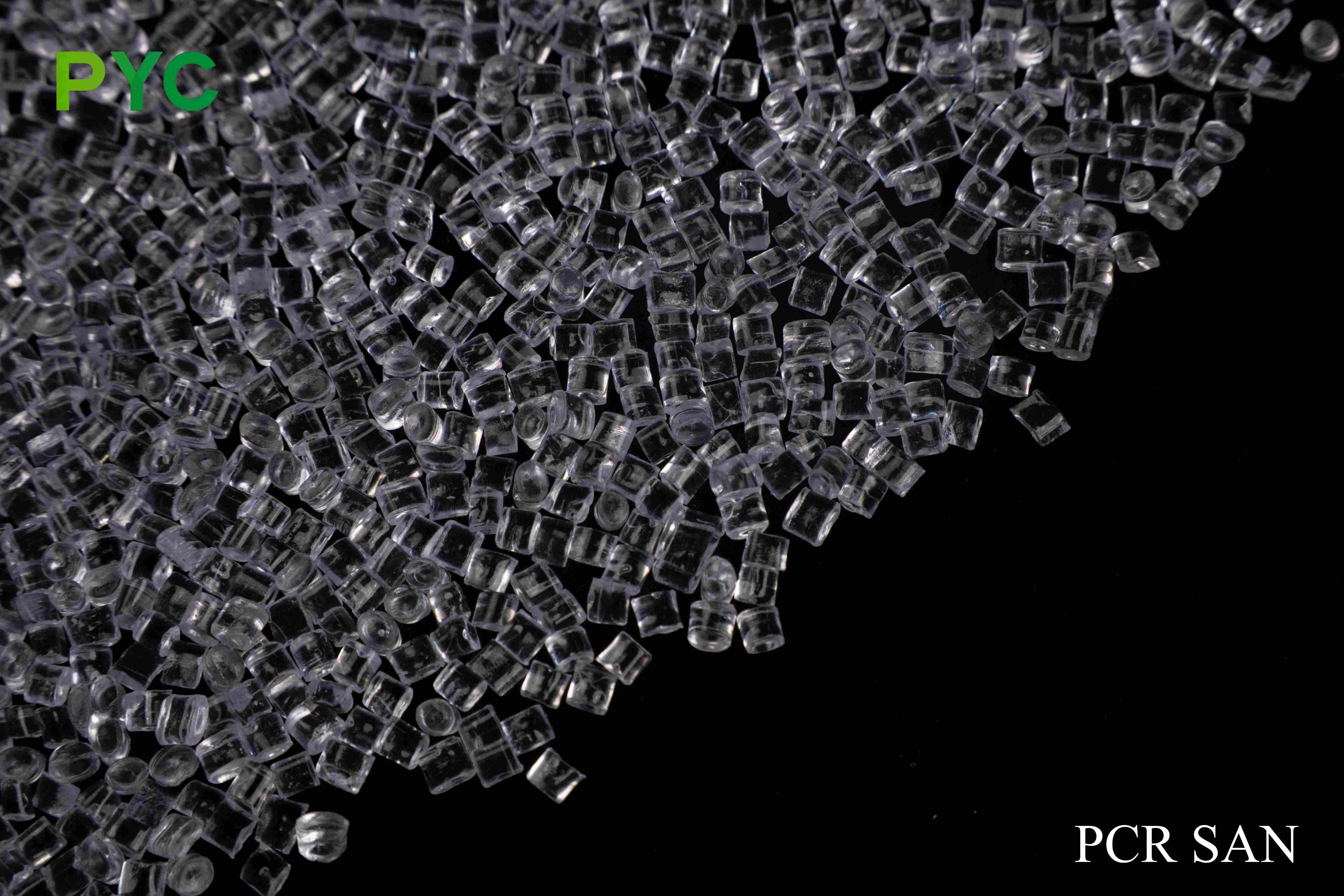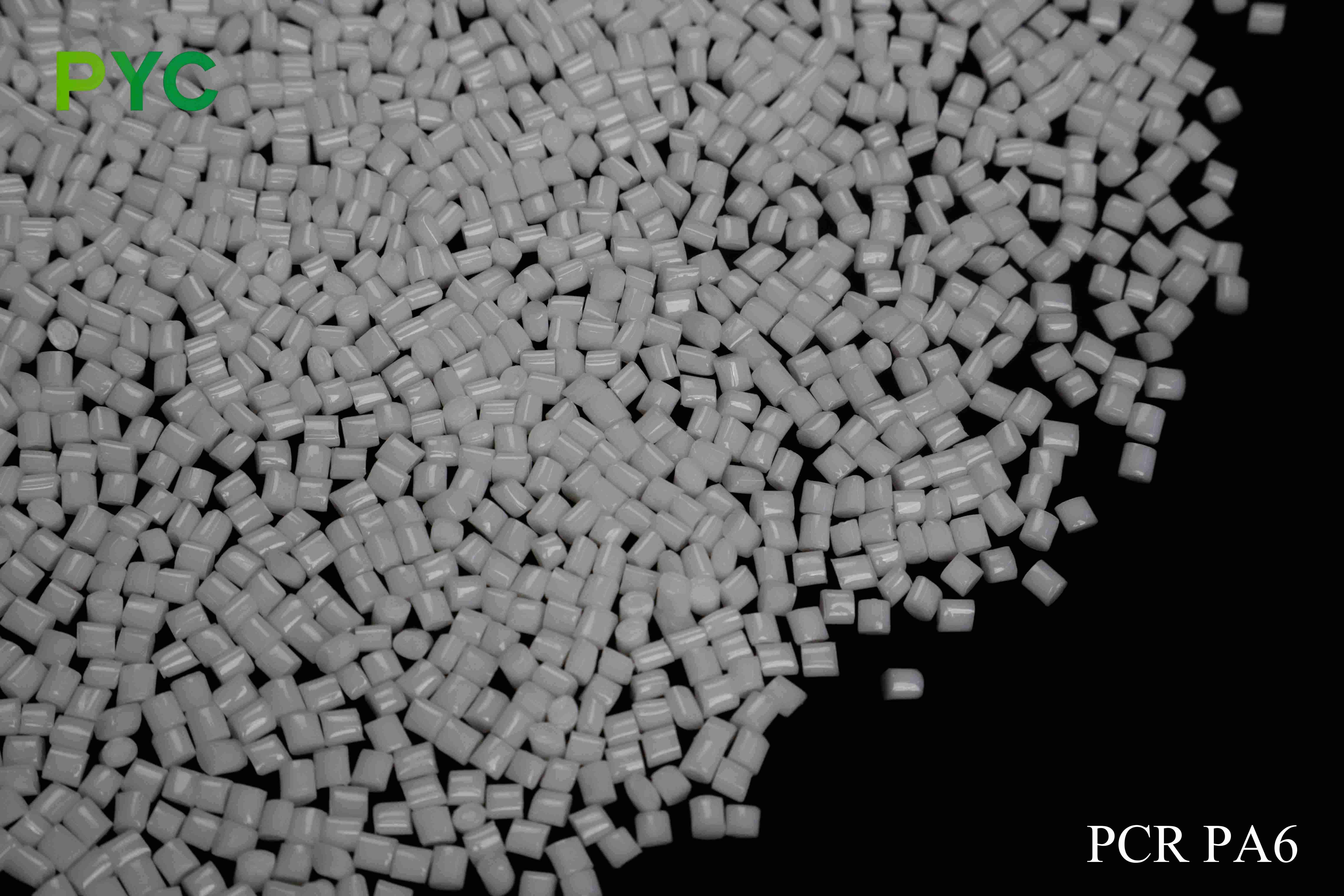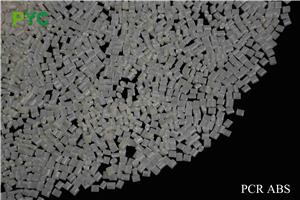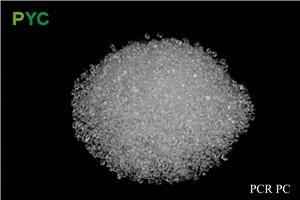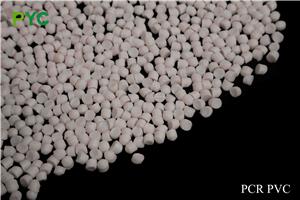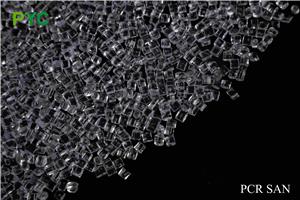PCR PE

PCR PE (Post Consumer Recycled Polyethylene) is an environmentally friendly plastic made by recycling polyethylene (PE) material after consumption and reprocessing. As one of the most widely used plastics in the world, PE has excellent chemical resistance, low temperature resistance and strong toughness. By recycling PE materials, PCR PE can not only reduce the burden of plastic waste on the environment, but also effectively reduce the cost of raw materials, and is widely used in many industries.
Product Details
Recycled raw materials mainly come from the following categories:
Waste plastic packaging materials
Polethylene is widely used in the packaging industry, especially LDPE (low density polyethylene) and HDPE (high density polyethylene), which is usually used in the manufacture of plastic bags, films, containers, bottles, packaging boxes and so on. With the consumption and abadonment of consumer goods, discarded plastic packaging materials have become an important source of PCR PE.
Examples of recycled sources:
Plastic shopping bags: Clear plastic bags used in everyday shopping, especially in supermarkets and retail stores.
Food packaging film: such as food bags, plastic wrap, film packaging, etc., especially flexible packaging used in the food industry.
Bottles and containers: discarded PE plastic bottles and containers, widely used in cosmetics, cleaning agents, detergents and food packaging.
Express packaging materials: such as plastic wrap film, foam packaging, etc., from express companies.
Discard plastic bottles
Polyethylene materials occupy a dominant position in the manufacture of PE bottles, especially in the packaging of daily chemicals, beverages, detergents, oils and other products. With the increase of plastic bottles discarded by consumers, these discarded PE bottles have become an important source of PCR PE.
Examples of recycled sources:
Beverage bottles: such as mineral water bottles, carbonated beverage bottles, juice bottles, etc., usually use HDPE.
Detergent bottles: Bottles such as detergent, hand sanitizer, disinfectant, etc., common HDPE materials.
Daily chemical bottles: plastic containers such as shampoo bottles, body wash bottles, cosmetics bottles, etc.
Agricultural film and plastics for agricultural use
In the agricultural field, PE materials are widely used in mulch films, greenhouse films, irrigation pipes, etc. Although these agricultural plastics play an important role in crop growth, they are easy to be polluted due to long-term exposure to sunlight and bad weather, so they become a source of recycling after waste.
Examples of recycling sources:
Agricultural mulch: Plastic film used to cover farmland for heat preservation, moisture, and grass control.
Greenhouse film: Plastic film used in greenhouses or greenhouses, usually LDPE or LLDPE (linear low density polyethylene).
Irrigation pipe: Plastic pipe in agricultural irrigation systems, usually using PE material.
Scrap appliances and electronics
Although the use of PE in home appliances and electronic products is relatively small, it still appears in the external and internal parts of some home appliances, especially in the packaging of some large equipment. Discarded electronics housings and equipment parts also provide a source of recycling for PCR PE.
Examples of recycling sources:
External packaging of electrical appliances: plastic film or plastic parts used in the housing of home appliances such as televisions, refrigerators, washing machines, etc.
Battery case: plastic case, plastic parts, etc., used in some small electronic devices, some of which may be made of PE material.
Electronic accessories: such as chargers, earphones, plugs, etc., may be made of polyethylene.
Discard consumer and household products
Some plastic products are more common in the consumer market and become a source of PCR PE as they are scrapped or eliminated. The recycling of these products helps to provide a large amount of PCR PE raw material.
Examples of recycling sources:
Plastic furniture: such as plastic tables and chairs, storage shelves, etc., especially in applications on low-density polyethylene materials.
Discarded children's toys: such as some large plastic toys, outdoor plastic equipment, etc.
Household storage boxes: discarded storage boxes, plastic boxes and household containers, etc.
Industrial waste and production scraps
In the production process of PE, often produce waste or waste, these waste after fine recycling and treatment, can be effectively used into PCR PE raw materials. These wastes usually come from unused plastic scraps in the production process, scraps in the injection molding process, etc.
Examples of recycling sources:
Injection molding scraps: In the injection molding process, due to excess plastic heads and waste, it can be converted into PCR PE after recycling treatment.
Plastic production waste: The scraps and scrap produced during the production of PE films, containers or other plastic products.
Recycling process
Recycling processing of PCR PE usually involves the following steps:
Collection and sorting: Discarded PE materials are first collected through a recycling system and initially sorted according to species and the environment in which they have been used.
Cleaning and decontamination: Remove stains, adhesives and oils from the surface and interior of the material to ensure that the material is pure.
Crushing and granulation: The waste materials are crushed and granulated to facilitate subsequent processing.
Quality testing and screening: strict quality control is carried out on the recovered PCR PE material to test its strength, toughness, transparency and other properties.
Reprocessing: The final PCR PE is processed into pellets or sheets for the manufacture of new products, which are widely used in packaging, agriculture, construction and other fields.
Excellent mechanical properties
PCR PE inherits the excellent properties of PE, with good flexibility, low temperature resistance and impact resistance. Even in low temperature environment, PCR PE can still maintain stable mechanical properties, suitable for a variety of extreme environments.
Environmental protection and sustainability
The use of PCR PE helps to reduce the accumulation of plastic waste, promote the recycling of plastics, and meet the requirements of global environmental protection and sustainable development. By using PCR PE, companies can not only reduce their dependence on new raw materials, but also reduce their carbon footprint and drive green production.
Excellent processing adaptability
PCR PE has excellent processing properties, can be processed by extrusion, injection molding, blow molding and other processes, adapt to a variety of complex product designs, and is widely used in the manufacturing of different products.
Low cost advantage
Due to the use of recycled materials, the production cost of PCR PE is low, which provides enterprises with a cost-effective alternative to help reduce the production cost of the product.
Fields of Application:
Packaging industry
PCR PE is widely used in food packaging, consumer goods packaging, garbage bags and other fields. Its flexibility and transparency make it an ideal film and bag material, and meet environmental requirements, reducing the environmental burden of packaging materials.
Agricultural field
PCR PE is widely used in the production of agricultural films, mulch, irrigation pipes and other products. It shows excellent weather resistance and UV resistance in agricultural applications, which can effectively protect crops while reducing resource waste.
Construction industry
PCR PE is often used in the production of building materials such as building membranes, pipes and isolation membranes. Its impact resistance and low temperature resistance make these materials have better adaptability in construction sites and outdoor environments.
Consumer and daily plastic products
PCR PE is also widely used in the manufacture of household items, electronic product accessories, daily necessities, etc. Its good mechanical properties and stability make it an ideal raw material for these products.
Performance advantages and technical features:
High flexibility and low temperature stability
PCR PE has very good flexibility and low temperature resistance, even in the cold environment can maintain good toughness and strength, suitable for applications under extreme temperature conditions.
Uv resistance and weather resistance
PCR PE has excellent weather resistance and UV resistance, suitable for use in outdoor environments, such as agricultural film, building film, etc., can be exposed to the sun for a long time and is not easy to age or crack.
Good processability and customizability The processability of PCR PE is very good and can be processed through a variety of molding processes (such as injection molding, extrusion, blow molding, etc.) to meet the needs of different products. It can adapt to different process requirements, high flexibility.
Environmental performance
PCR PE not only meets current environmental standards, but also promotes the realization of a circular economy by reducing the accumulation of plastic waste. The use of PCR PE helps to reduce carbon dioxide emissions and reduce the consumption of petroleum resources.
Environmentally friendly and cost effective:
Resource conservation and environmental protection
The use of PCR PE can effectively reduce the demand for new petroleum-based materials, help enterprises reduce resource consumption, but also reduce plastic waste pollution to the environment, is an important step to promote environmental protection and circular economy.
Reducing production costs
Using PCR PE as a raw material can effectively reduce production costs, and the price of PCR PE is usually more competitive than that of traditional raw materials. Enterprises can improve profits by reducing the cost of raw materials, especially in the increasingly stringent environmental requirements of the market environment, with greater economic and market competitive advantages.

